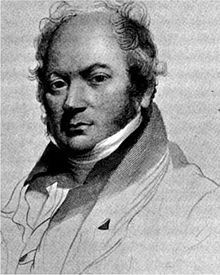John Thomas Smith (engraver)
| John Thomas Smith | |
|---|---|

J.T.Smith by William Skelton
|
|
| Born | 1766 Hackney carriage in London |
| Died | 1833 London |
| Cause of death | inflammation of the lungs |
| Other names | "Antiquity" Smith |
| Education | included the Royal Academy |
| Occupation | Engraver, draughtsman, curator |
| Employer | British Museum |
| Spouse(s) | Anna Maria (Prickett) |
John Thomas Smith also known as Antiquity Smith (1766–1833) was an English painter, engraver and antiquarian. He wrote a life of the sculptor Joseph Nollekens that was noted for its "malicious candour" and was a keeper of prints for the British Museum.
John Thomas Smith was born in the back of a Hackney carriage on 23 June 1766. His mother was returning home to 7 Great Portland Street. He was named John for his grandfather and Thomas after his great uncle, Admiral Thomas Smith. His father Nathaniel Smith was at that time a sculptor working for Joseph Nollekens, but later became a printseller.
John Thomas Smith first tried to train as a sculptor with Nollekens, but left to study with John Keyse Sherwin and at the Royal Academy. After three years he left to live off his drawing skills. He gave up his topographical drawing and acting ambitions to compile Antiquities of London and its Environs which was later described as his favourite work. Smith became known as "Antiquity Smith".
Smith published books of engravings and worked as a drawing master in Edmonton. In 1807 he published Antiquities of Westminster which has been described as his major work. The work had been inspired by paintings found during extension work to the House of Parliament on 11 August 1800. Smith and Charles Gower were invited to see the pictures, and Smith was able to obtain permission to sketch them. He had to work early in the morning to avoid the workmen. It is said that they frequently demolished what he had just finished sketching and he kept this work up constantly for six weeks. After this his permission was transferred to an artist from the Society of Antiquaries, but Smith had a complete record by that time. The published book contained over a hundred drawings of antiquities in Westminster that were no longer standing.
In 1796 the young John Constable was introduced to Smith, and he became Constable's informal artistic mentor.
Smith had a very public row between 1807 and 1809 following a failed partnership with John Sidney Hawkins. They had planned to work together on a book, with illustrations by Smith and an accompanying text by Hawkins. However the partners fell out and Hawkins went on to publish the book alone; he included an explanation of Smith's absence. Smith published a reply and this was followed by a refutation by Hawkins. Finally 62 additional pictures were published separately after the publication.
...
Wikipedia
